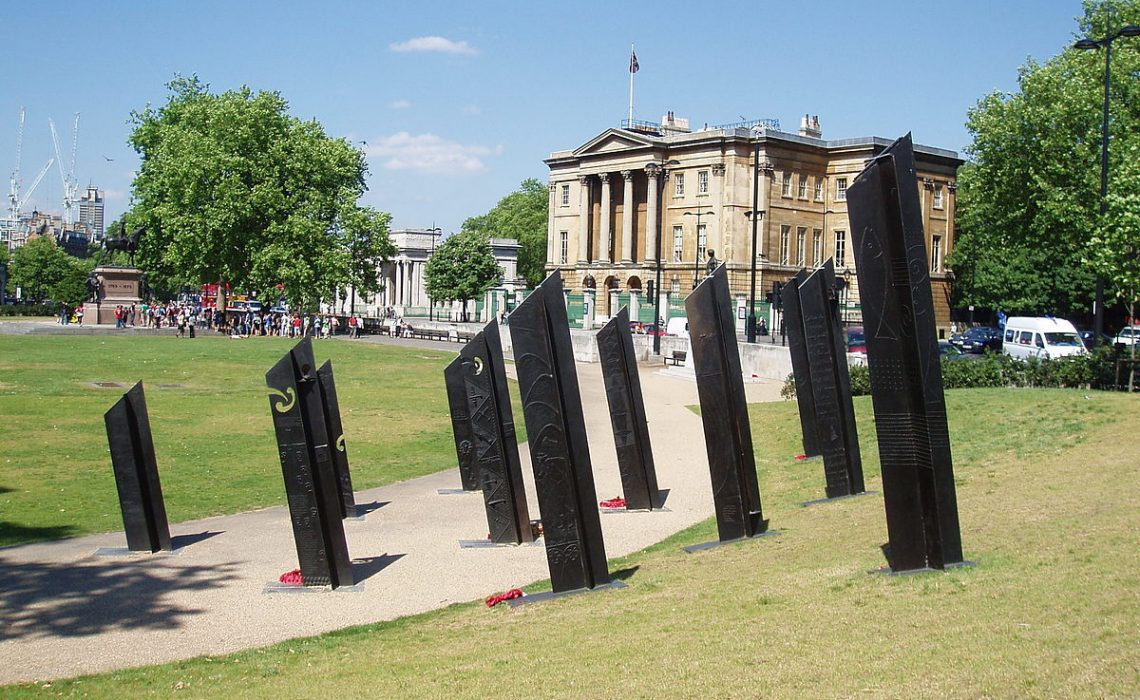
You might also like:
1 London
Unveiled on Armistice Day 2011, the memorial — officially named “Southern Stand”— consists of 16 cross-shaped bronze sculptures, set in formation on a grassy slope in London’s Hyde Park Corner. Designed by architect John Hardwick-Smith and sculptor Paul Dibble, the individual standards are adorned with text, patterns and smaller sculptures— with their defiant, forwardfacing poses calling to mind soldiers in procession. Six standards are arranged to form the shape ofthe Southern Cross, and at night, they are illuminated to appearlike the southern stars, pointing south. It’s a place to commemorate the relationship between New Zealand and the United Kingdom, particularly during wartime.
2 Le Quesnoy
In 1923, a 10-tonne marble plaque was placed on the wall of Le Quesnoy to commemorate the liberation of the town by soldiers of the New Zealand Division,with somewho took part in the battle present for the occasion. The northern French town has always been associated with the New Zealander’s battle, with a priest atthe dedication hoping it “would always be for them an object of pilgrimage”. The town is also setto become home to New Zealand’s first permanent European war memorial museum,with the opening on November 4, 2018,to mark the centenary of the liberation.
3 Canberra
In the Australian capital, the relationship between Kiwi and Aussie troops is remembered with a sculpture at the head of Canberra’s Anzac Parade. The memorial, in the form of a two bronze arches, represents the handles of a flax basket, or kete.
Based on the Maori proverb “Mau tena kiwaiote kete, maku tenei” or “Each of us at a handle ofthe basket”, this kete symbolises the shared experience between our countries.
Each handle is culturally distinct, with the Australian side in an Aboriginal motif and the New Zealand sidewith a Maori design. Anzac Parade is home to many other war memorials and can be explored on a self-guided walking tour.
Source: nzherald.co.nz
